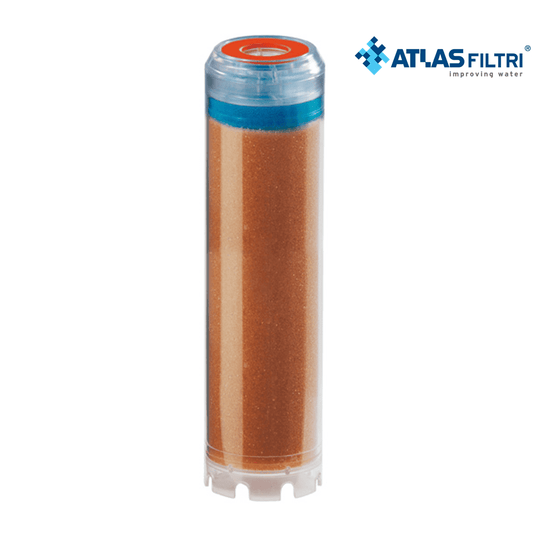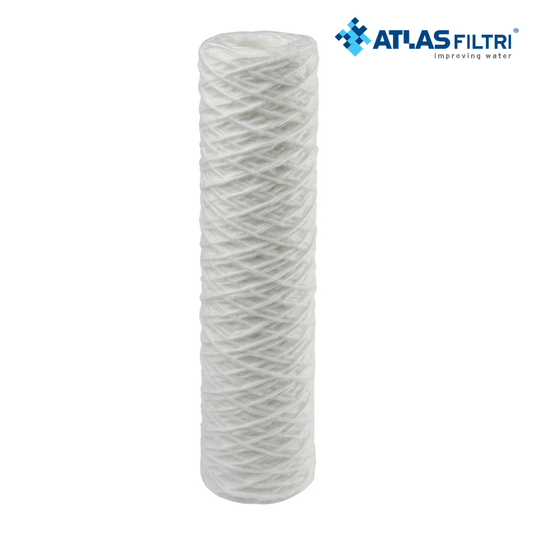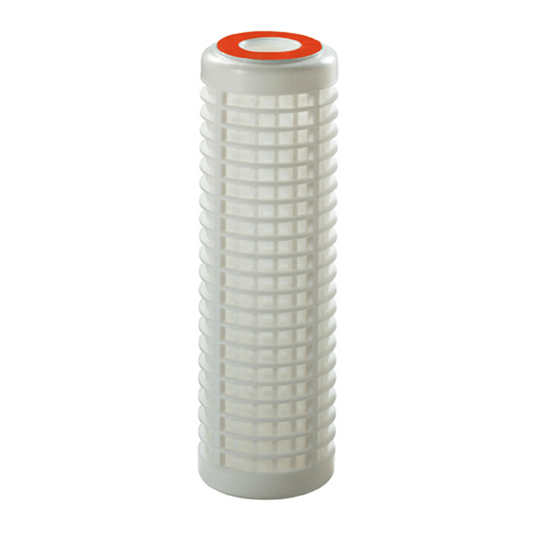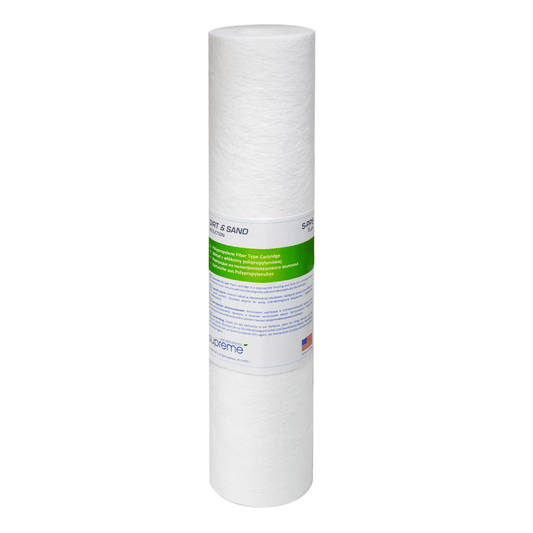-
Atlas Filtri CB-EC activated carbon block 20 inch 10 mic
Regular price 34,97€Regular priceUnit price per -
Atlas Filtri Anti-Limescale Cationic Resin 20 inch
Regular price 39,97€Regular priceUnit price per -
Atlas Filtri sediment filter FA SX 20 inch 5 mic
Regular price 13,97€Regular priceUnit price per -
Atlas Filtri sediment filter FA SX 20 inch 25 mic
Regular price 13,97€Regular priceUnit price per -
Atlas Filtri filter insert RL SX 20 inch 50 mic
Regular price 34,97€Regular priceUnit price per -
Supreme sediment filter 20" (51.0 cm) 5µm
Regular price 9,97€Regular priceUnit price per -
Atlas Filtri sediment filter CPP SX 20 inch 5 mic
Regular price 12,97€Regular priceUnit price per
Pumps and power supplies - Booster pumps
A booster pump is suitable for both replacement and retrofitting a reverse osmosis system. It is a booster pump equipped with diaphragms and designed for intermittent operation of 30 minutes, 1 hour, or up to 4 hours. A 30-minute cool-down phase should then occur. A booster pump supplies the reverse osmosis system with a constant working pressure of 5.5 bar. Rubber feet absorb vibrations and running noise.
The Brushless Booster Pump features a brushless motor . This Brushless Booster Pump has no carbon brushes in the motor, making it more durable and less subject to wear. The pump head is also replaceable. With a runtime of up to 12 hours of continuous operation , the pump is very popular in large reverse osmosis systems up to 800 GPD, as they allow large quantities of reverse osmosis water to be produced continuously without long breaks. However, after 12 hours of continuous operation, even the brushless pump should be allowed to cool down for approximately 30 minutes before being used again.
When used at the specified intervals, the regular and brushless pumps can operate for up to 2,000 hours. All pumps have a 3/8" internal thread connection . The connection elbows are generally installed with Teflon tape. Additional accessories for booster pumps:
- Power supply / transformer for pressure booster pumps, low pressure switch, high pressure switch
- Solenoid valve 24V and 36V for automatic system separation from tap water,
- Autoflush 24V and 36V, automatic flush valve, combo Autoflush with flow limiter, manometer, pressure gauge
Working pressure & maximum pressure of a booster pump
Booster pumps are diaphragm pumps with specified working pressure and maximum pressure . The working pressure is a fixed, determined value at which the pump operates effectively and delivers optimal performance and water delivery. The maximum pressure is the maximum value the pump can achieve.
A booster pump generally works against a resistance. In our case, that's the reverse osmosis membrane and the flow restrictor . Both components only allow a certain amount of water to pass through, so a perfectly tuned booster pump can build up optimal water pressure and deliver the optimal amount of water.
If, over the course of use of a reverse osmosis system, the filters become increasingly saturated and clogged, or the flow restrictor becomes calcified, the resistance to the booster pump increases. The operating pressure also increases accordingly, reaching the maximum pressure. Power consumption also increases. At the same time, however, the performance of the reverse osmosis system decreases. Less water is pumped, and less osmosis water is produced. This condition of a reverse osmosis system or booster pump is very critical and should be counteracted immediately by changing the filter or replacing the flow valve to avoid unnecessary strain on the booster pump and causing permanent damage. Exceeding the maximum pressure will result in a failure.
Delayed or missed filter changes also place unnecessary strain on the reverse osmosis membrane, which must now take over the work normally performed by the pre-filters. A calcified flow valve prevents wastewater from flowing, forcing it back into the membrane housing. The membrane becomes increasingly calcified and no longer produces pure water. This means that the membrane also wears out prematurely and must be replaced to maintain consistent pure water quality.
To ensure long-term enjoyment of your reverse osmosis system, it's essential to change the filters regularly every six months and always ensure that the system produces regular wastewater. We also offer free wastewater outlets in our shop for monitoring wastewater.
Help with:
- Booster pump defective, booster pump becomes loud, booster pump leaking
- Osmosis system has no power, too little osmosis water, why poor water quality in reverse osmosis system, high conductivity
- Osmosis system no wastewater flows, flow valve defective, flow valve calcified







